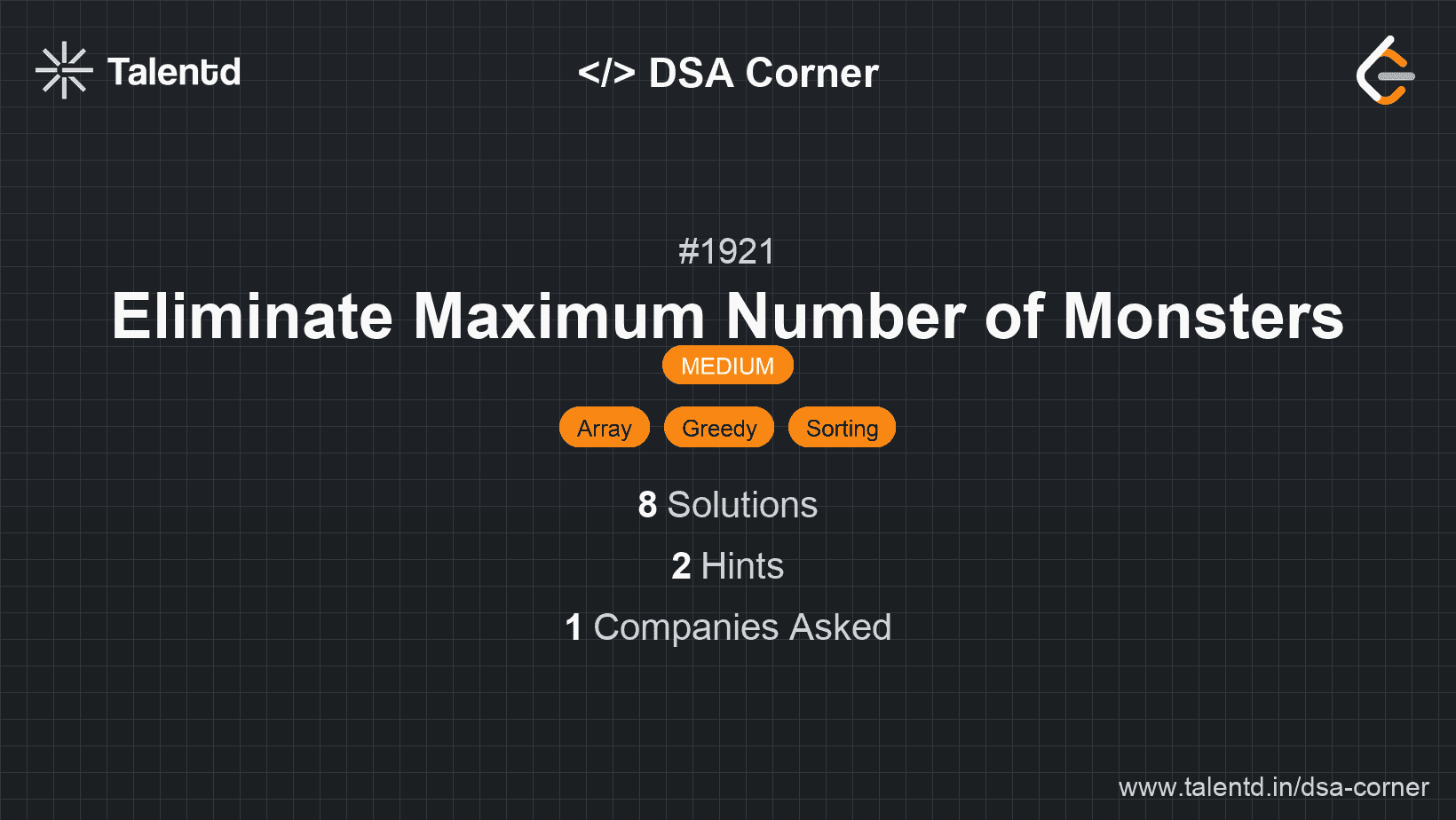
Sponsored
Sponsored
This approach involves computing the exact time each monster will take to reach the city and then eliminating them in the order of their arrival times. The goal is to eliminate as many monsters as possible before any monster reaches the city.
Time Complexity: O(n log n) due to sorting the times.
Space Complexity: O(n) to store the arrival times.
1#include <stdio.h>
2#include <stdlib.h>
3
4int compare(const void *a, const void *b) {
5 return (*(int *)a) - (*(int *)b);
6}
7
8int eliminateMaximum(int* dist, int distSize, int* speed, int speedSize){
9 int time[distSize];
10 for(int i = 0; i < distSize; i++) {
11 time[i] = (dist[i] + speed[i] - 1) / speed[i]; // ceiling of (dist[i] / speed[i])
12 }
13 qsort(time, distSize, sizeof(int), compare);
14 for(int i = 0; i < distSize; i++) {
15 if(time[i] <= i) return i;
16 }
17 return distSize;
18}
19
20int main() {
21 int dist[] = {1, 3, 4};
22 int speed[] = {1, 1, 1};
23 int result = eliminateMaximum(dist, 3, speed, 3);
24 printf("%d\n", result);
25 return 0;
26}The C solution calculates the time each monster takes to reach the city and sorts these times. It then iterates over the sorted times, using each minute to eliminate the monster that reaches the city next. If at any point the current minute is equal to or greater than the time a monster reaches the city, the process stops.
This approach improves the efficiency of eliminating the maximum number of monsters by using a binary search method. It pre-calculates when a monster will reach the city and uses efficient search techniques to make decisions dynamically during the elimination process.
Time Complexity: O(n log n) due to the sort operation.
Space Complexity: O(n) to store arrival times.
1function eliminateMaximum(dist, speed) {
2
This solution uses a binary search-inspired thought process but leverages JavaScript's sort and conditional checks with the built-in array methods for a straightforward solution.